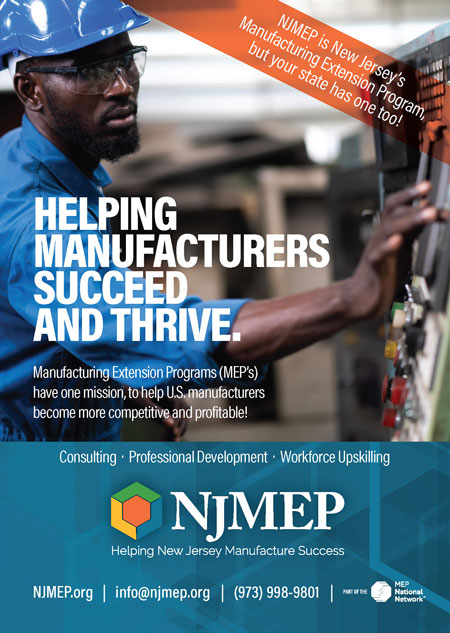TRUMPF team working on recovery efforts.

n Farmington, Connecticut, the factory floor in Building 2 hummed with activity. Production Manager Matthieu Prou was on his usual rounds, walking up and down the six aisles of TRUMPF Inc. as workers and machines processed sheet metal components for the manufacturer’s fabrication machinery. At approximately 10 a.m., he made his way down the last aisle and noticed a machine at the end of the aisle on fire. He smiled at a passing employee and thought, ‘What are my guys doing now?’ But before he could get any closer, a huge explosion knocked him and the employee to the ground. Now completely in the dark and with flames behind them, he pulled her away from the blast and they ran out of the building along with the rest of the nearly 100 employees in the facility.
TRUMPF team working on recovery efforts.

n Farmington, Connecticut, the factory floor in Building 2 hummed with activity. Production Manager Matthieu Prou was on his usual rounds, walking up and down the six aisles of TRUMPF Inc. as workers and machines processed sheet metal components for the manufacturer’s fabrication machinery. At approximately 10 a.m., he made his way down the last aisle and noticed a machine at the end of the aisle on fire. He smiled at a passing employee and thought, ‘What are my guys doing now?’ But before he could get any closer, a huge explosion knocked him and the employee to the ground. Now completely in the dark and with flames behind them, he pulled her away from the blast and they ran out of the building along with the rest of the nearly 100 employees in the facility.
The quick thinking of TRUMPF managers and employees to evacuate the building made all the difference. Firefighters and police officers arrived and quickly worked to put out the fire and make sure everyone was safe.
“I was struck by how organized our first responders were and how adept they were at handling the situation,” says Burke Doar, senior vice president of sales and marketing. “They were on the scene quickly, and everyone knew what their role was and how to go about handling various responsibilities. It was a comfort during a chaotic period.”
Homeland Security also quickly arrived at the accident site. “In fact, I remember one of the first people I met was from Homeland Security,” Hoecklin says. “That surprised me at first but then as I thought about it, when a plane hits a building, there is a 20-year-old scar that everyone thinks about.”
Meanwhile, TRUMPF’s HR team facilitated contact to employees’ families, by sharing cell phones. “People rushed out leaving behind cell phones, car keys—we wanted to make sure everyone could communicate with loved ones that they were OK,” Doar says.
Factory floor in Building 2.
“After we had made sure everyone was accounted for, we made sure they would make it home alright,” Hoecklin says. “This was the Thursday before Labor Day weekend. We reassured everyone that they would be paid but asked our employees from Building 2 not to come in until the Tuesday after the holiday weekend so we could take a moment and figure out what to do next.”
 I was struck by how organized our first responders were and how adept they were at handling the situation.
I was struck by how organized our first responders were and how adept they were at handling the situation. 
Doar was struck by the efficiency and speed in which the FAA conducted its investigation so that the facility could be given back to TRUMPF to rebuild. “The FAA worked night and day through the long weekend gathering evidence, while local authorities confirmed Building 2 was safe,” says Doar. “In the days after, the police had procedures in place to help workers safely retrieve belongings left behind that they were unable to collect the day of the accident.”
When employees arrived on Tuesday, management had a plan in place to divide Building 2 employees into different teams to begin the long process of cleaning and rebuilding.
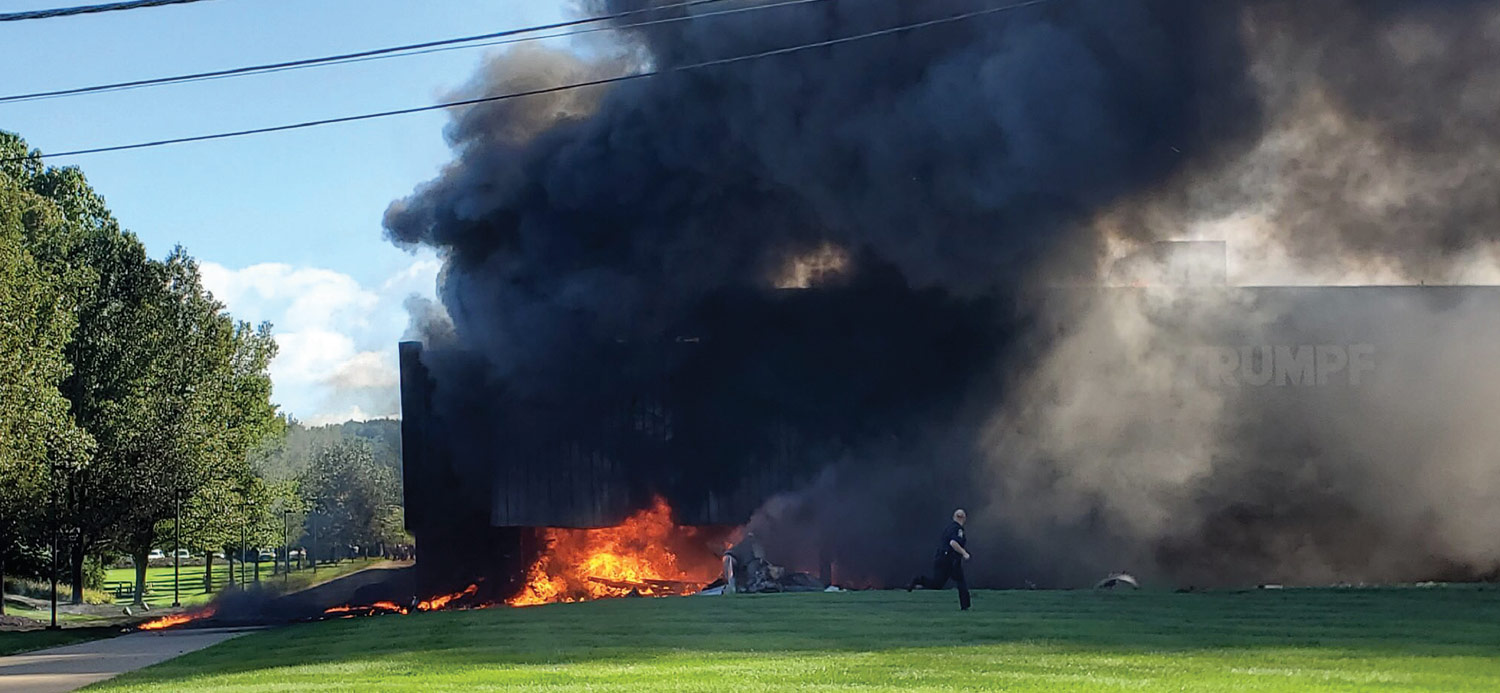
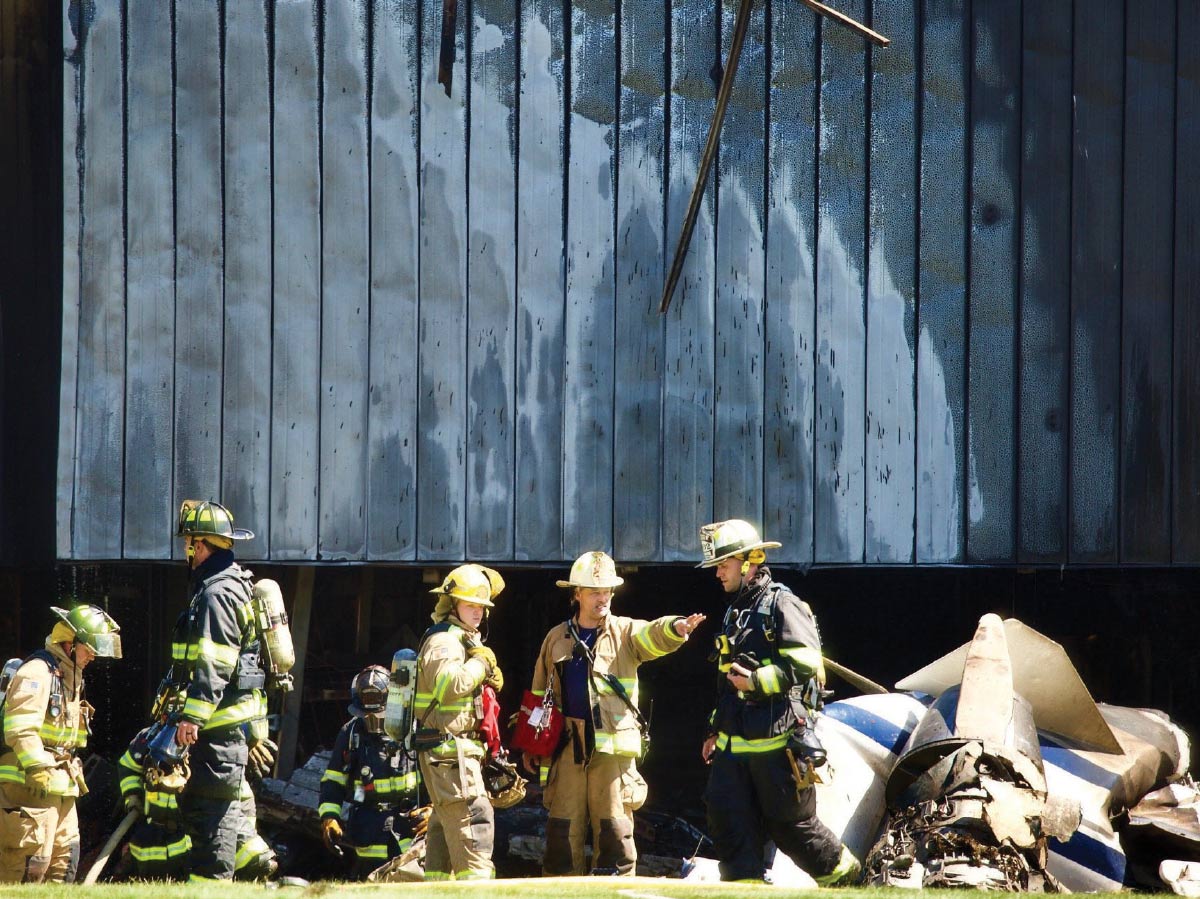
Used with permission.
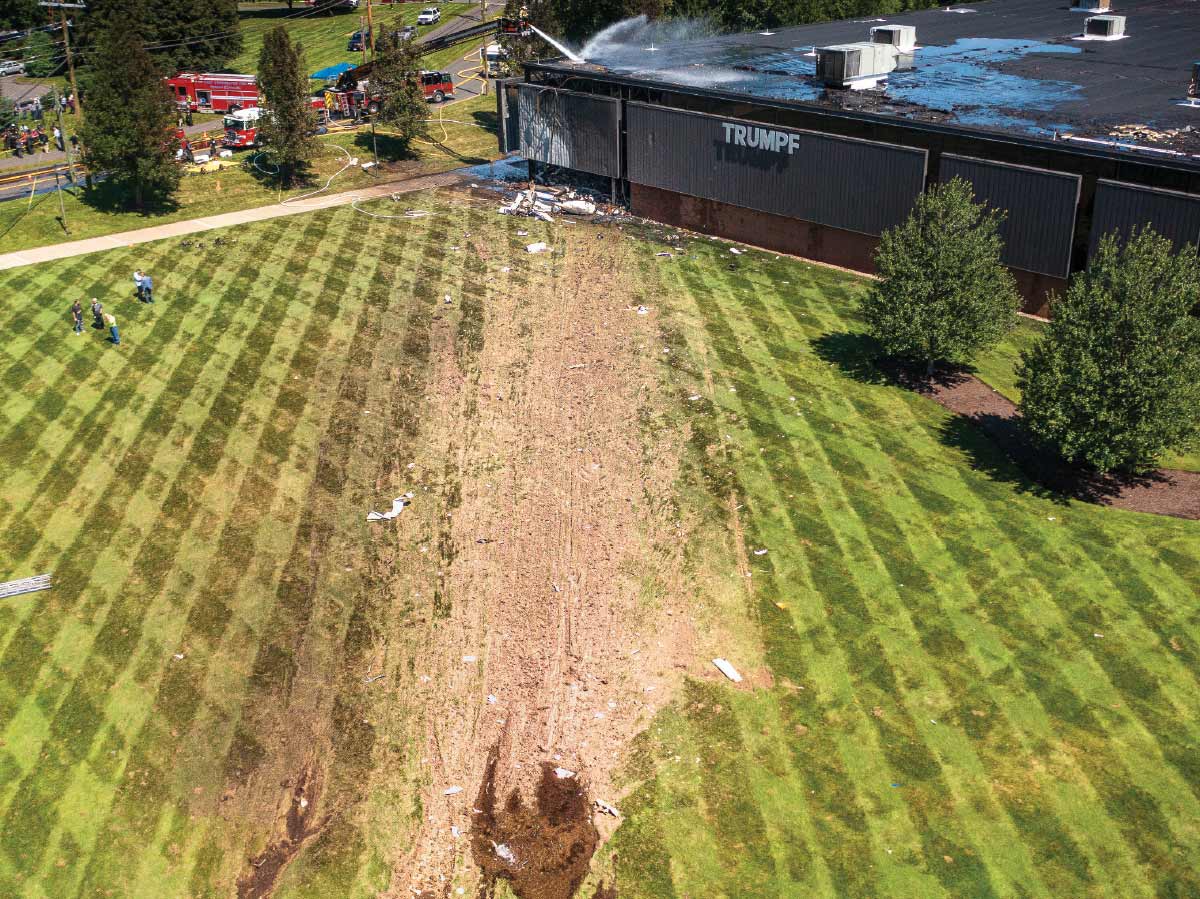
Used with permission.
As of the end of September, employees were able to reenter a portion of Building 2. Temporary partitions separate the damaged part of the building from the unaffected bays. Operators are back to cutting sheet metal in another building. Plans continue as leadership considers how to make the best of a tragic situation. “Once we were able to create temporary work stations, we could take a step back and consider where opportunities for improvement lie,” Hoecklin says.
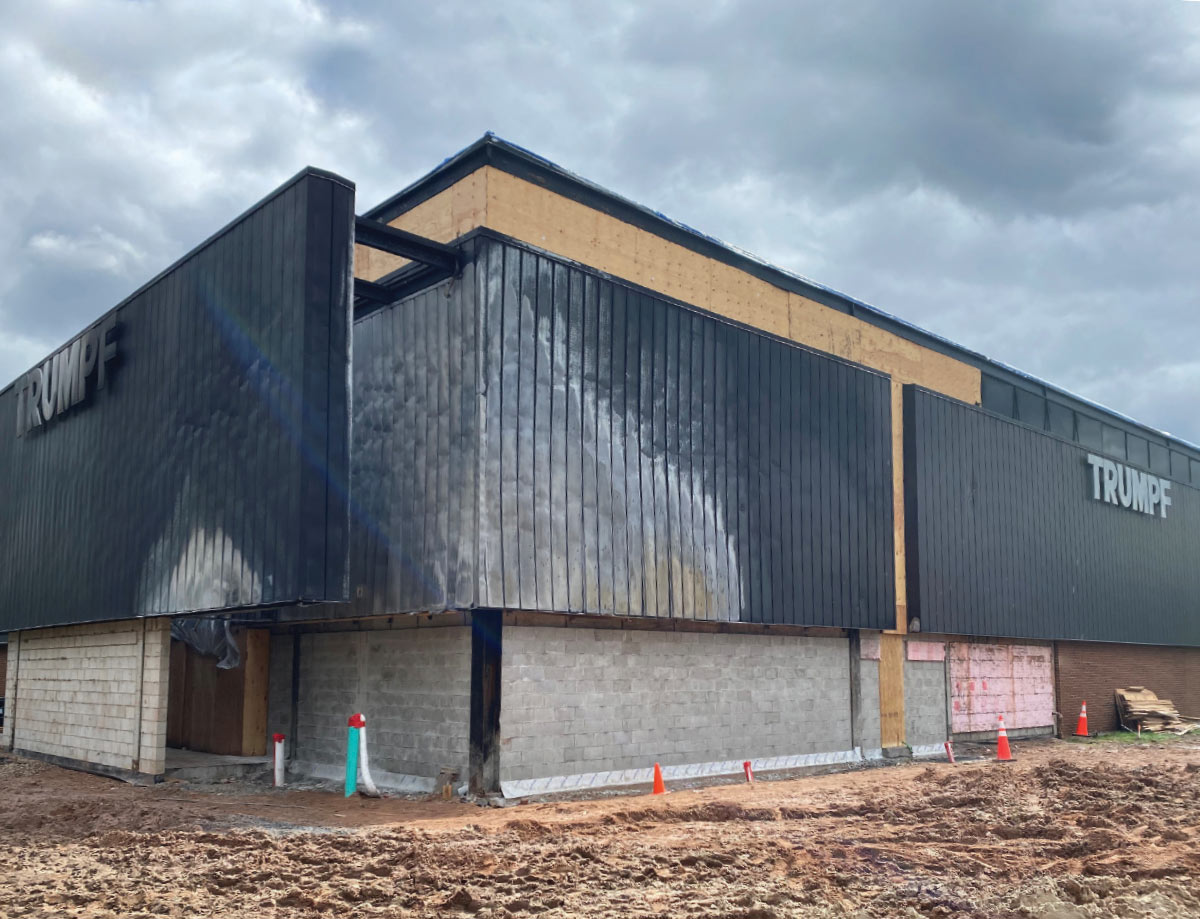
The outpouring of help from the surrounding community bolstered spirits. “We received tremendous support from our employees as well as our customers, suppliers and our community—it’s given us a lot of strength and courage,” Hoecklin says.
 We’ve experienced firsthand how people come together in times of tragedy.
We’ve experienced firsthand how people come together in times of tragedy. 
Going above and beyond, local TRUMPF customers offered up their own facilities and available shifts. “Local customers that have been using our equipment for years told us, ‘Please come in, use our equipment if you need to, anything we can do to help,’” Hoecklin says. “We’ve experienced firsthand how people come together in times of tragedy.”
While TRUMPF works to rebuild, the effects of the plane crash are likely to linger a while longer. “To the physical structure, we have to replace the roof on a large part of the building as well as reconstruct the section most damaged by the impact of the jet and the resulting fire,” Hoecklin says. “We will be dealing with effects of this accident for a long time.
“We had record order books going before this crash.” he continues. “We’ve restarted operations, and are working hard to reduce the impact on our operations. At the same time, we’re looking at how to rebuild things better.”
Preparedness is important. “It’s never easy to look around the corner and know what is going to happen,” Doar says. “We practice our drills and have protocols in place in case of an emergency, but you hope you never need it. We will go back and examine our response to continue to learn and ensure we are prepared. It’s our duty because, remember, we have a big responsibility. We take our employees’ welfare very seriously.”

